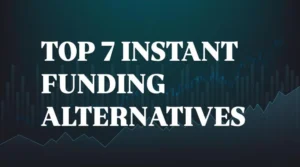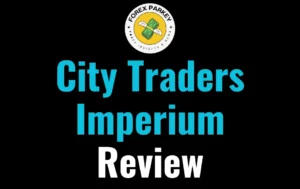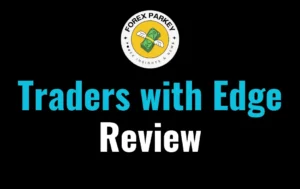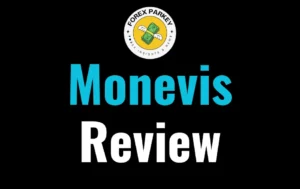Mate, if you’re tired of watching your account go up in smoke and your stress levels hit new highs, you’re not alone.
Passing phase one sometimes feels tougher than finding a sock’s pair. But what if you could try a prop firm with chill, low targets—no Everest, just a gentle hill? Less burnout, more hope, and finally a fair shot.
🎯 Low Profit Target Prop Firms: The Chill Trader’s Secret Weapon
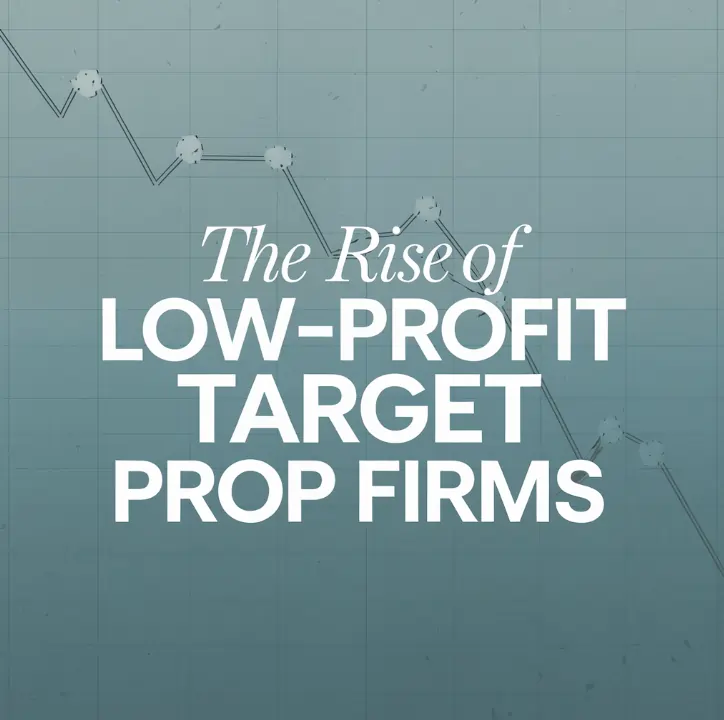
Alright, let's have a real chat. How many times have you stared at your screen, heart pounding like a drum solo, just praying for that last 0.5% to pass Phase One? We've all been there. The high-target challenges are a pressure cooker designed to make you fail.
You’re up 7%, feeling like a trading god, then one bad NFP trade wipes out your progress. It's a cycle of hope and despair that leaves you more burned out than a cheap candle. We've all got those “almost-made-it” stories.
But what if I told you there's another way? A quiet lifesaver nobody talks about because it’s not flashy. Enter the low-profit target prop firm. This isn’t about scalping your brain out for a 10% gain in 30 days. Trading with a low target is like jogging instead of doing a CrossFit burpee marathon blindfolded. One is a sustainable way to build consistency; the other is a direct flight to Injury Town.
So, how do these firms work? It's simple. Instead of demanding an 8% or 10% profit target, they ask for something sane, like 5% or 6%. Some evaluation programs, like those offered by FunderPro or FundedNext, have been known to feature more manageable targets.
This completely changes how you trade. You're not forced into risky setups or high-lot-size gambles just to meet a wild deadline. You can actually wait for your A+ setups, manage your risk properly, and stick to your plan.
This is a total mindset shift. It's about trading smarter, not harder. You stop trying to be a trading floor hero and start acting like a patient, calculating business owner who just wants to make steady money.
If you’re tired of the trader trauma and the constant feeling that you're one tick away from blowing it, maybe it’s time to stop the madness. Give a low-target firm a look. It might be time to chill out with a firm that doesn’t treat your stop loss like a punchline.
Top Low Profit Target Prop Firms of 2025
| Prop Firm | Key Details |
|---|---|
| Quant Tekel | 6% target per phase, 2-step challenge, no time limits, up to 90% split, up to $200K funding. |
| Neomaaa | 6% per phase, 2-step, 4% daily/8% total drawdown, unlimited time, EAs/news/copy trading. |
| Funding Pips | 5% per phase, 2-step, 6% max drawdown, unlimited time, up to 100% split, instant funding. |
| FundedSquad | 6% per phase, 2-step, 4% daily/8-10% total drawdown, instant funding, 12-hour payout. |
| FundedNext | 8% (Phase 1), 5% (Phase 2), 2-step, 5% daily/10% total drawdown, profit share in evaluation. |
| FXIFY | 5% per phase (Three-Phase), no time limits, 5% max drawdown, no consistency rule. |
| Topstep | 6% target, 1-step, futures only, end-of-day drawdown, no time pressure, up to $150K funding. |
| The5ers | Milestone-based, 1/2/3-step, unlimited time, no recurring fees, all styles welcome. |
| The Trading Pit | 10% (forex), 2–5% (futures), 1/2-step, up to 90 days, free cTrader, up to €5M scaling. |
| Apex Trader Funding | 6% target, 1-step, 8 min trading days, 30% drawdown, 100% payout on first $25K. |
| FTMO | 10% (Phase 1), 5% (Verification), 2-step, static drawdown, 4-day min, up to $2M scaling. |
1. Quant Tekel: 6% Target Each Phase
Quant Tekel’s prop firm model in 2025 is built for traders who want to keep things realistic. With a 6% profit target per phase and a two-step evaluation, you get access to up to $200,000 in funding, no time limits, and a profit split as high as 90%.
Weekly or biweekly payouts mean you don’t wait forever for your cut. Their partnership with Eightcap ensures fast execution, tight spreads, and a regulated trading environment.
This setup is perfect for traders who are tired of high-stress targets and want a fair shot at proving their skills without the constant fear of blowing up. If you hate high-pressure challenges and want to trade at your own pace, Quant Tekel is worth your time.
The Overlooked Edge: No Time Limits
Quant Tekel quietly stands out by letting you pass each phase at your own speed—no countdown clocks, just pure focus on trading well, not fast.
2. Neomaaa: 6% Target Locked
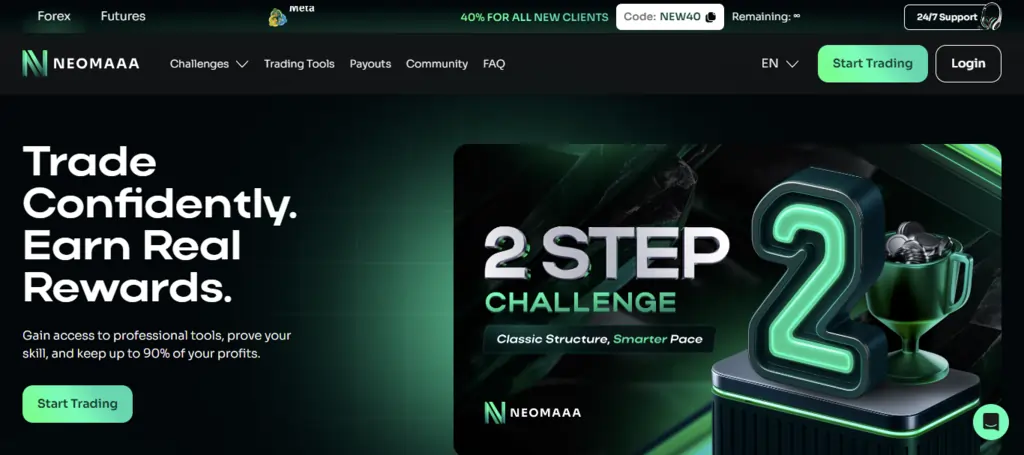
Neomaaa’s 2-step challenge keeps things chill with a 6% profit target per phase, 4% daily drawdown, and 8% total drawdown, all with no time limits and a bi-weekly payout.
You can use EAs, trade news, copy trade, and even hold positions over weekends. The minimum trading days are just four, and you get an 80/20 profit split.
Compared to other easy-to-pass models, Neomaaa stands out for its flexibility, instant funding options, and the ability to trade multiple asset classes—including forex, crypto, indices, commodities, and stocks. Their rules are clear, and you’re not forced into a trading marathon. It’s perfect for traders who want a fair shot without crazy pressure.
The Hidden Gem: True Unlimited Time
Neomaaa quietly wins by giving you unlimited time to pass—no ticking clock, just pure focus on trading well, not fast.
3. Funding Pips
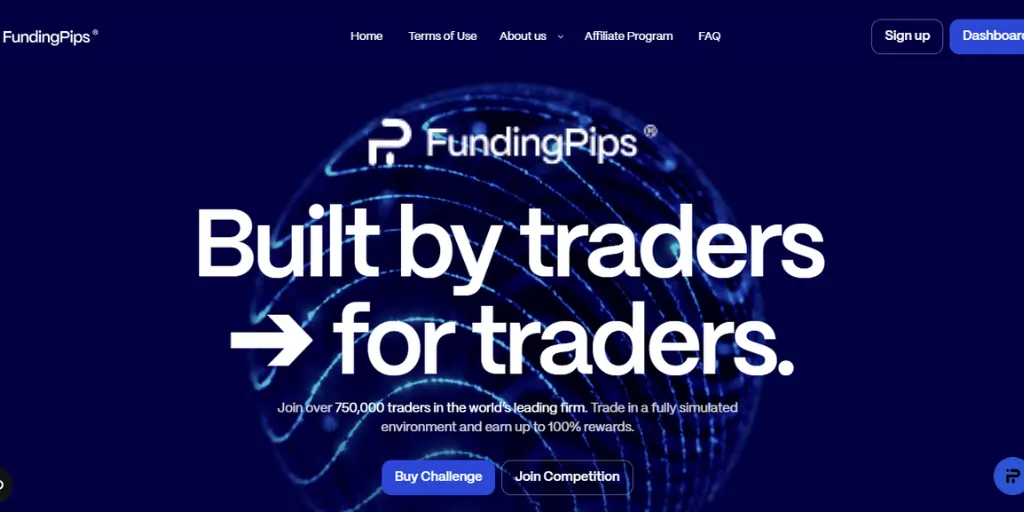
Funding Pips offers a 5% profit target in both phases of its 2-step challenge—one of the lowest out there. With static 6% max drawdown, 4% daily loss cap, and unlimited time to pass, you’re not forced into wild trades. You can hold trades over weekends, use risk-management EAs, and trade forex, crypto, metals, indices, and energies.
Payouts can be weekly, bi-weekly, or monthly, and profit splits go up to 100% for top performers. Entry fees start low, and there’s even an instant funding option for those who want to skip evaluations.
Funding Pips is a great fit for traders who want a fair, low-stress path to funding and value clear rules. It’s not for those who want to use martingale, grid, or high-frequency strategies—those are strictly off-limits. If you’re after a prop firm that rewards consistency and doesn’t set you up to fail with sky-high targets, this one’s worth a look.
The Standout Rule: Unlimited Time to Pass
Funding Pips stands out by giving you as much time as you need to hit your target—no ticking clock, just pure focus on trading well.
4. FundedSquad
FundedSquad sets the bar low—in a good way—with a 6% profit target in its 2-step challenge, making it one of the most approachable options for traders who want to avoid high-pressure hurdles. The challenge format is simple: two phases, each with a 6% target, a static daily drawdown of 4%, and a total drawdown of 8-10%. Instant funding is also available, letting you skip evaluations and start trading right away.
Traders get to enjoy bi-weekly payouts (every 14 days) and generous profit splits—up to 90% for challenge accounts and up to 100% for instant funding. There’s no minimum trading days for instant funding, and only three for challenges.
You can use EAs, copy trade, and hold positions over weekends and during news events. Scaling is a breeze: every time you hit a 10% profit milestone, your account size doubles, with the potential to grow up to $1 million.
FundedSquad stands out for its $1,000 payout delay guarantee—if you don’t get paid within 12 hours, you get a bonus. This, combined with instant funding, transparent rules, and a thriving Discord community, makes it a top pick for traders who want a fair shot without the stress.
The Coolest Feature: Lightning-Fast, Guaranteed Payouts
FundedSquad is the only prop firm that pays you within 12 hours—or hands you a $1,000 bonus if they don’t.
5. FundedNext

FundedNext’s main challenge in 2025 is built for traders who want a realistic shot at funding. The two-phase challenge asks for 8% in Phase 1 and just 5% in Phase 2—much lower than the old-school 10%+ targets.
You get a 5% daily loss limit and a 10% overall drawdown, with a minimum of five trading days per phase. News trading is allowed on most models, and you can use EAs and bots as long as you follow ethical trading practices. Payouts are fast, profit splits go up to 95%, and you can withdraw profits after 21 days.
FundedNext is a legit option for traders who prefer to trade slow and steady. The rules are clear, and you’re not forced to overtrade or take wild risks. Plus, you can scale your account up to $4 million if you keep performing. There’s even an instant funding option for those who want to skip the challenge and start earning right away.
The Standout Feature | Real Profit Sharing During the Evaluation
FundedNext quietly stands out by giving you a share of real profits even while you’re still in the evaluation phase—something most firms don’t offer.
6. FXIFY
FXIFY gives traders a choice of three challenge formats in 2025, all with no time limits and trader-friendly rules. For low-pressure seekers, the Three-Phase Challenge is the standout: you need to hit a 5% profit target in each phase (three phases total), with a static 5% max drawdown and just five active trading days per phase. This setup is built for steady, consistent traders—no sprinting, no panic, just gradual progress.
You can also pick the classic Two-Phase Challenge (10% target in Phase 1, 5% in Phase 2) or the One-Phase Challenge (10% target), but the Three-Phase is the chillest for those who hate high-pressure targets. FXIFY lets you use EAs, copy trade, and hold trades over weekends.
There’s a generous profit split (up to 90%), bi-weekly payouts, and account scaling up to $4 million for those who keep performing. Rules are clear: no martingale, grid, or latency arbitrage, but most normal strategies are welcome.
The FXIFY X-Factor | No Consistency Rule in the Three-Phase Challenge
FXIFY’s Three-Phase Challenge quietly ditches the dreaded consistency rule—so you can pass at your own pace, without worrying about “perfectly even” profits every day.
7. Topstep
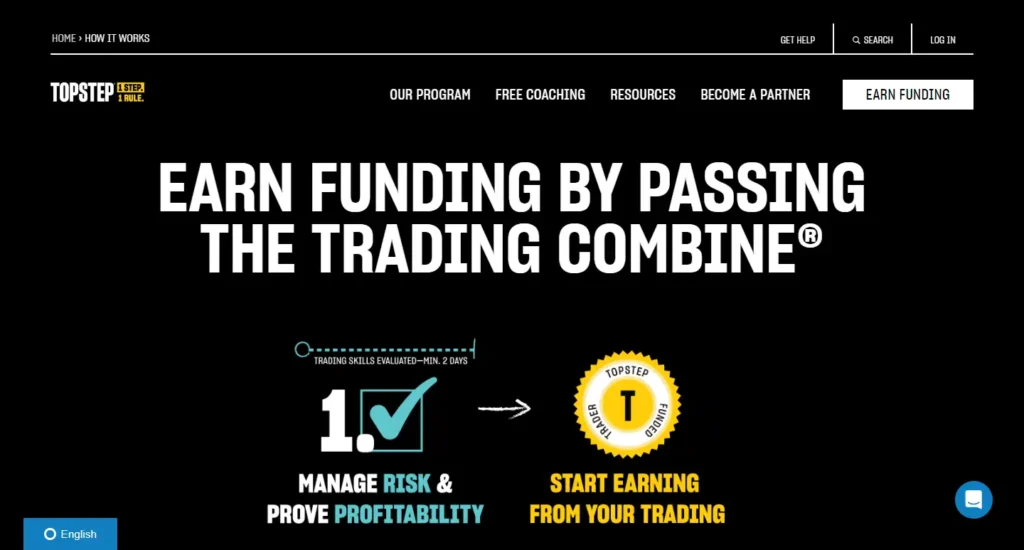
Topstep in 2025 is still a top pick for traders looking for low-stress, low-profit target challenges—especially in the futures space. Their Trading Combine is a one-step evaluation where you pick your account size ($50K, $100K, or $150K), and aim for a 6% profit target (e.g., $3,000 on the $50K plan) with a clear maximum loss limit (e.g., $2,000 for $50K accounts).
There’s no time pressure to hit your target, and the rules focus on risk management: don’t breach your max loss, stick to position size limits, and keep your best trading day below 50% of total profits.
You can trade major futures contracts, including indices, commodities, and even micro crypto contracts. News trading and copy trading are allowed (with some restrictions), but bots aren’t supported yet.
Payouts are reliable: you can request up to four per month, and express accounts allow for withdrawals after just five winning days with $200+ net profit per day. Topstep is friendly for both beginners and pros, with educational resources, group coaching, and a free two-week trial to help you get started.
The Standout Feature | End-of-Day Drawdown, Not Intraday
Topstep’s Maximum Loss Limit is calculated based on your end-of-day balance—not on unrealised intraday profits—giving you more breathing room and reducing the chance of being knocked out by a temporary drawdown.
8. The5ers
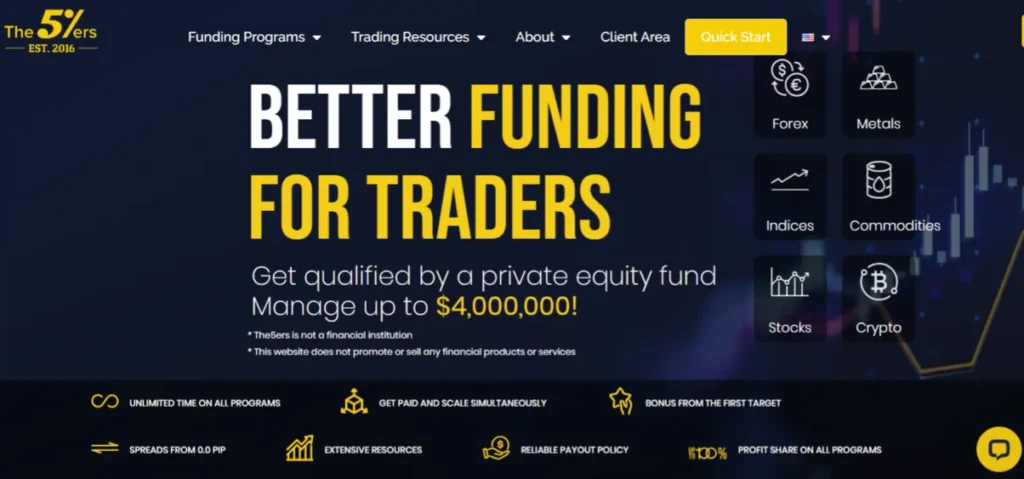
The5ers in 2025 offers a range of funding programs designed for traders who want a fair shot at getting funded without wild targets or hidden traps. You can choose from one-step, two-step, or three-step (Bootcamp) challenges, each with clear, simple objectives and unlimited time to hit your milestone.
There’s no subscription fee, no recurring costs, and no fine print—just a straightforward process: join, trade, earn, and grow.
Profit targets are set as “milestones” rather than huge, one-off percentages, making it much more realistic to progress. Every time you reach a milestone, your account size doubles, and you get paid for your profits without having payouts deducted from your balance.
You can trade forex, metals, indices, commodities, crypto, and stocks. The5ers allows overnight and weekend holding for forex and metals, news trading, and algo trading. There are no restrictions on trading style, so swingers, scalpers, and algorithmic traders are all welcome. The payout policy is reliable, and you can access your profits with a click.
Getting funded with The5ers is genuinely achievable for traders who prefer steady, consistent gains over risky, high-octane trading. The unlimited time and milestone structure mean you’re not forced to overtrade or take unnecessary risks.
The5ers’ Hidden Gem | Unlimited Time on All Programs
The5ers quietly stands out by giving traders unlimited time to pass every program—no ticking clock, just pure focus on hitting your milestones at your own pace.
9. The Trading Pit
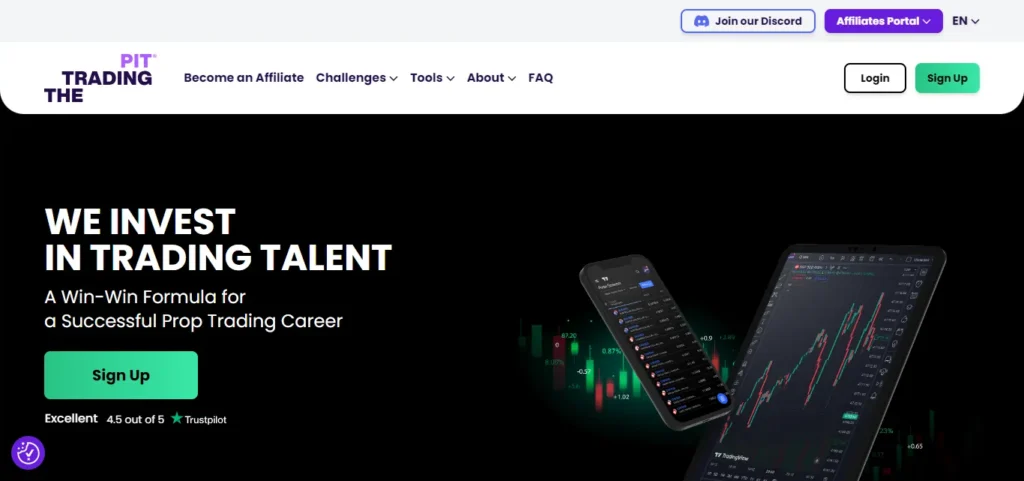
The Trading Pit stands out in 2025 with a multi-asset, trader-friendly model that gives you a choice between one-step and two-step challenges, profit splits up to 80%, and account sizes from $10,000 to $250,000.
For forex CFDs, most challenges have a 10% profit target (8% for VIP), unlimited overnight and weekend holding, and up to 90 days to pass—making it much more forgiving for swing traders and those who need extra time.
Futures traders can pick from Lite, Standard, Executive, or VIP accounts, with profit targets as low as 2–5% depending on the tier, and all entry fees are refundable if you pass.
After you get funded, The Trading Pit supports you with bi-weekly payouts, scaling up to €5 million, and access to a vibrant community, free education, and advanced platforms like cTrader, ATAS, Quantower, and VolSys. You can withdraw via bank wire, crypto, or even Binance, and the firm is known for its transparency and strong customer support.
This setup makes The Trading Pit a top pick for traders who want realistic targets, flexible rules, and genuine support after the challenge—not just a one-off payout.
The Trading Pit’s Unique Edge | Free cTrader Access for All
The Trading Pit gives every trader free access to the advanced cTrader platform—no extra fees, just pro-level tools from day one.
10. Apex Trader Funding

Apex Trader Funding in 2025 offers a straightforward one-step evaluation with a low 6% profit target, making it a solid pick for traders who want to avoid high-pressure challenges.
You need to trade for at least 8 days, with 5 days hitting a minimum $50 profit, and maintain a 30% initial drawdown limit that can increase to 50% as your account grows. They allow news trading and dollar-cost averaging (DCA), but no high-frequency trading or market manipulation. The risk-to-reward ratio per trade must be 5:1 or less, encouraging smart risk management.
Payouts are reliable and fast—you can request withdrawals anytime after passing, with funds typically processed within 2-4 business days. Profit splits are generous: 100% on the first $25,000 earned, then 90% thereafter. Apex also supports account scaling, so consistent traders can grow their funded accounts significantly.
This setup is ideal for traders who want a balance of flexibility, fair rules, and low-stress targets without sacrificing payout speed or profit share.
Apex’s Unique Edge | 100% Profit on First $25K with No Daily Drawdown
Apex Trader Funding stands out by offering 100% profit payout on the first $25,000 earned and no daily drawdown limits—giving traders more freedom and reward early on.
11. FTMO
FTMO remains a solid choice in 2025 for traders who want a realistic path to funding without wild targets. The FTMO Challenge requires a 10% profit target in Phase 1 and 5% in Verification, with a 4-day minimum trading period per phase—no need to rush or overtrade. Drawdown rules are clear: 5% max daily loss and 10% overall loss, both calculated from your starting balance.
FTMO allows news trading, EAs (as long as they’re your own), and overnight/weekend holds for most instruments.
The pass rate for the Challenge is about 10–15%, while Verification is easier, with a 50–70% pass rate. FTMO’s static drawdown model (not trailing) gives you more breathing room, making it friendlier for conservative and swing traders.
Beginners who trade slow and steady, use proper risk management, and avoid high-stress gambles will find FTMO’s rules transparent and fair. Profits start with an 80/20 split, scaling up to 90/10 for consistent performers, plus account scaling up to $2 million for those who keep hitting targets.
FTMO’s Underrated Feature | Static Drawdown for Real Breathing Room
Unlike many firms with trailing drawdowns, FTMO uses a static drawdown system—giving traders more space to recover from drawdowns and focus on long-term consistency, not daily survival mode.
Common Queries Related to Low Profit Target Forex Prop Firms
How fast can I get paid after passing a low Target Prop Firm Challenge?
Most top firms process payouts within 24–48 hours, with some offering same-day or even 12-hour guarantees. Always check the firm’s payout schedule and methods.
Do low profit target Prop Firms really offer unlimited time to pass the Challenge?
Many leading firms now offer unlimited or extended time to pass, removing the pressure of strict deadlines. Always confirm the time policy before signing up.
What are the most common rules that can cause Traders to fail the Challenge?
Breaching daily or total drawdown limits, overtrading, or using banned strategies like martingale or grid can lead to instant disqualification. Read all rules carefully before trading.
Can I use EAs, bots, or Copy Trading with low Target Prop Firms?
Most allow EAs and copy trading, but some restrict high-frequency or arbitrage strategies. Check each firm’s policy on automated trading tools.
How do Profit Splits and Payout Percentages work with these Firms?
Profit splits typically range from 70% to 90%, with some firms offering up to 100% for top performers. Higher splits may come with stricter rules or scaling requirements.
Are there any hidden Fees or Costs after passing the Challenge?
Most reputable firms are transparent, but always check for withdrawal fees, inactivity charges, or platform costs before committing to a program.
Why Low-Profit Target Forex Prop Firms are Smart Choice?
Choosing a low-profit target forex prop firm in 2025 is all about trading with less stress and more control. These firms offer realistic profit goals, flexible rules, and genuine support—making them perfect for traders who want to avoid burnout and focus on steady growth.
With options like instant funding, unlimited time, and fair drawdown limits, you can finally trade forex with confidence and consistency. If you’re searching for the best prop firm for beginners, low target forex funding, or a prop firm with easy rules, this new wave of firms puts trader success first.
Ready to ditch the pressure and start your funded trading journey? The right low-profit target prop firm is waiting for you.


